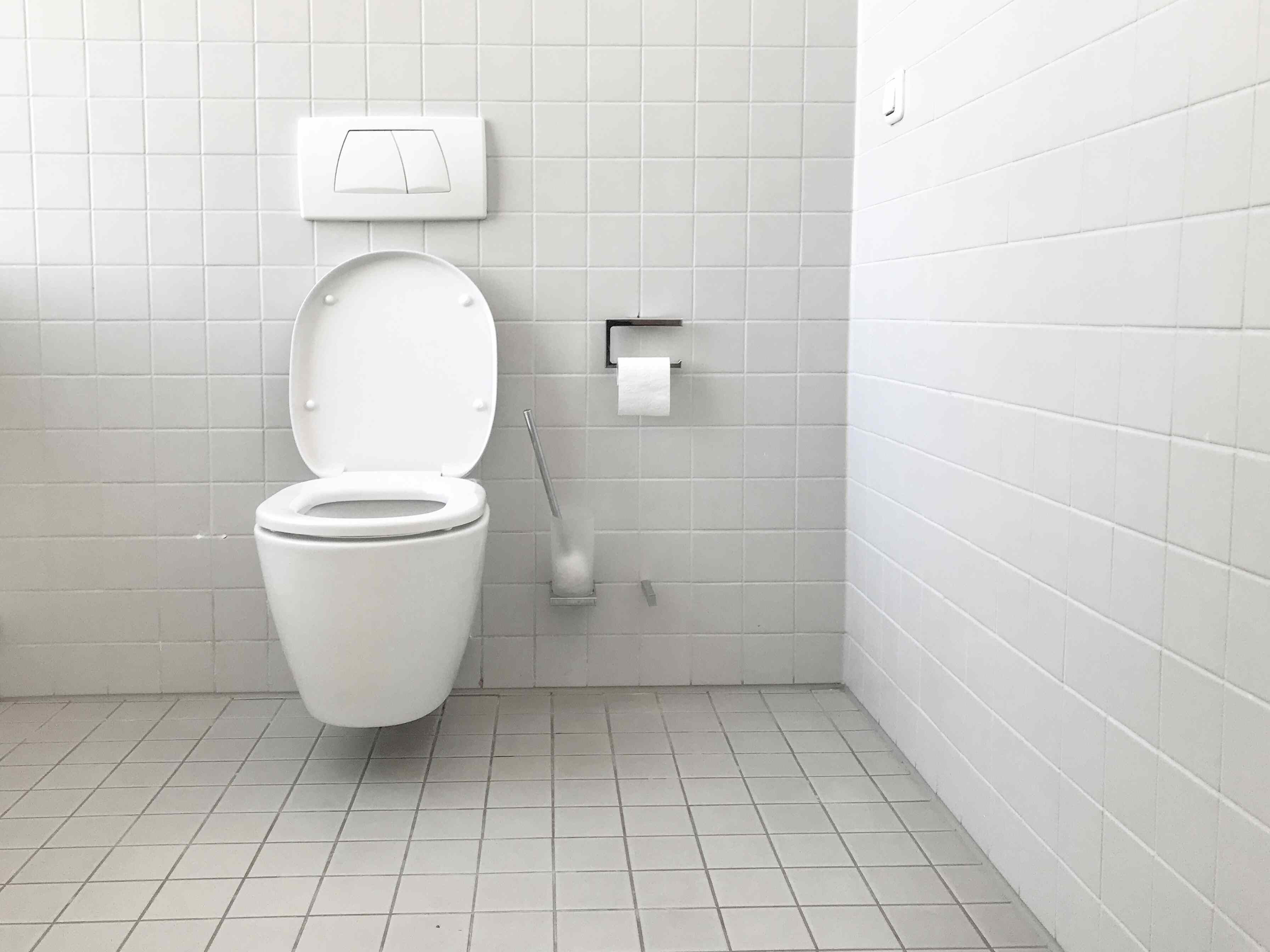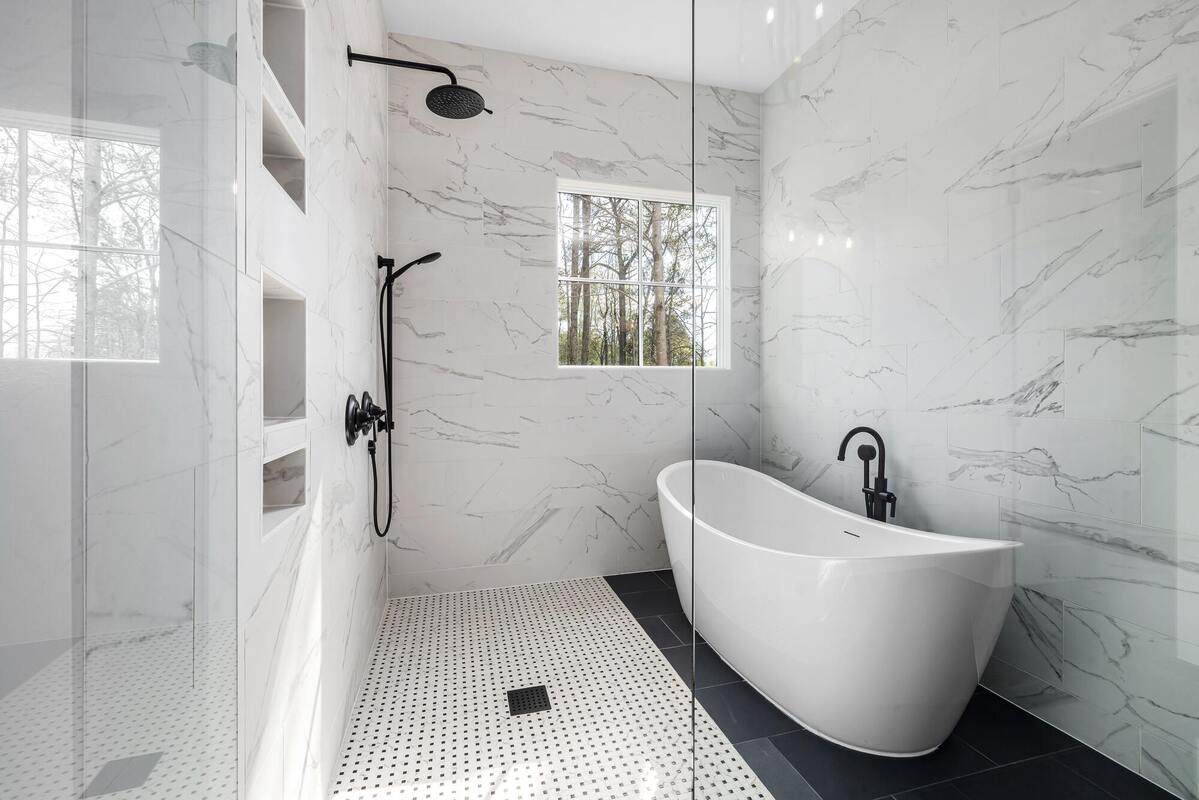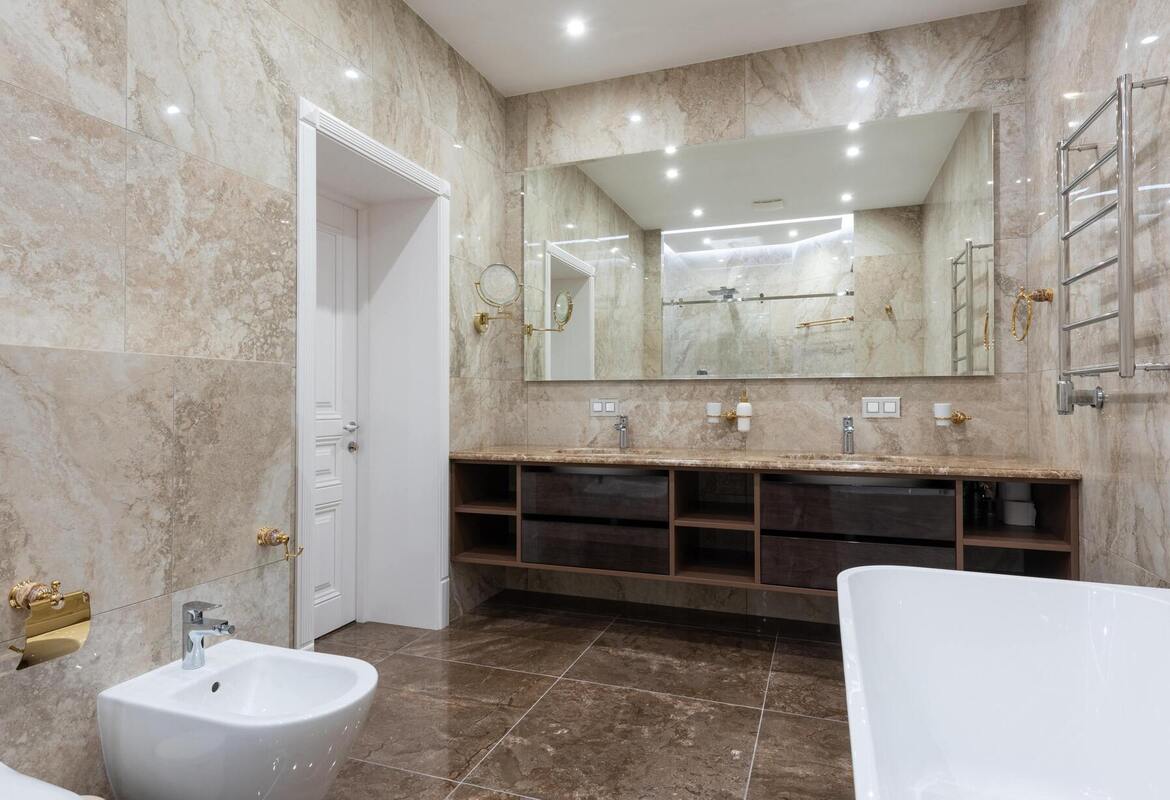Bathroom Zones: What Are The Rules For Bathroom Electrical Zones?

Electrical safety in bathrooms is a serious matter. With water and electricity in close proximity, strict regulations around bathroom zones are in place to reduce the risks.
The UK’s wiring regulations outline bathroom zones, which determine where to install electrical fixtures safely. The Institution of Engineering and Technology (IET) co-publishes the BS 7671 regulations with the British Standards Institution (BSI).
Formerly known as the IEE wiring regulations when the IET was the Institution of Electrical Engineers we now tend to call it the IET wiring regulations for short.
These rules ensure compliance with safety standards while allowing for the installation of lighting, heaters and other electrical fittings.
Bear in mind that wet rooms tend to be more ‘open-plan’ than traditional bathrooms and this format requires particular attention to the different electrical zones. Find out what a wet room is.
The results tend to be both highly practical and aesthetically pleasing though – here are several wet room ideas to inspire you before we get into the technical detail behind bathroom electrical zones.
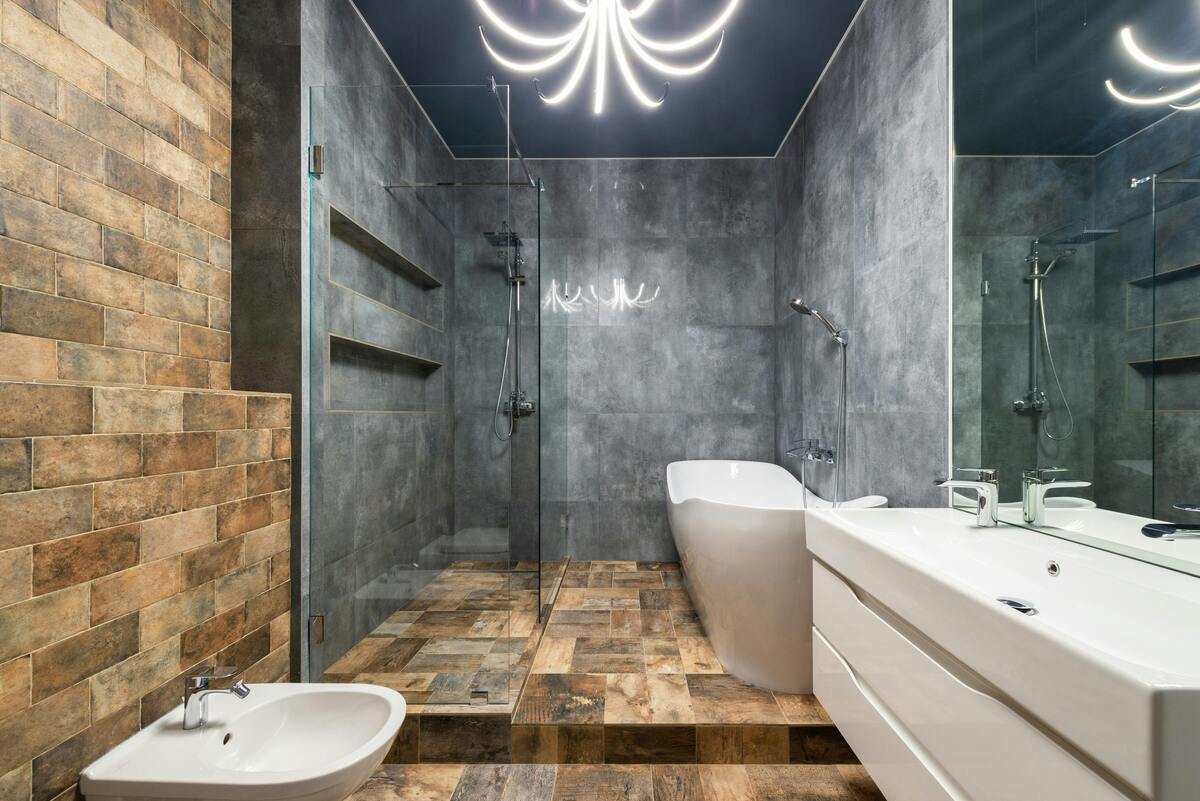
What are bathroom electrical zones?
Bathroom zones are specific areas, each with different restrictions on electrical appliances and equipment. These bathroom zones are defined in the UK Wiring Regulations (BS 7671) and are based on the level of exposure to water.
The closer an area is to a water source, the higher the risk, which is why certain electrical items are restricted or must meet specific IP (Ingress Protection) ratings.
The regulations apply to:
- Lighting – Ceiling lights, wall-mounted fixtures, and LED strips.
- Sockets – Standard power outlets, including shaver sockets.
- Showers and baths – Electric showers and associated wiring.
- Heaters and towel rails – Electric underfloor heating and heated towel rails.
- Fans and extractors – Ventilation systems and humidity-controlled fans.
Read our comprehensive guide on bathroom ventilation for more details.
Each bathroom electrical zone has specific requirements to ensure that electrical items do not pose a risk when exposed to moisture.

Bathroom zone overview
Zone 0 – Inside the bath or shower
This is the most hazardous area, covering the interior of a bath or shower tray. Any electrical equipment installed here must be:
- Rated at IPX7 (protected against immersion in water).
- Low voltage (max 12V) and supplied via a safety-isolated transformer.
Standard electrical items, including sockets and switches, are strictly prohibited in this area. The only permissible equipment is specially designed waterproof lighting or submersible pumps.
Zone 1 – Directly above the bath or shower
Zone 1 extends up to 2.25m from the floor, directly above a bath or shower tray. Electrical items in this zone must be:
- Rated at IPX4 (protected against splashing water) or IPX5 if exposed to water jets.
- Supplied by a 30mA RCD (Residual Current Device) to provide protection against electric shocks.
- Suitable for bathroom environments, such as enclosed ceiling lights and extractor fans.
Power outlets are not permitted in Zone 1, except for shaver sockets that meet strict isolation requirements.
Zone 2 – The Area Surrounding the Bath and Sink
Zone 2 extends 60cm from the edge of a bath, shower, or sink, reaching up to 2.25m high. This area is less exposed to direct water contact but is still considered a risk due to condensation and splashes.
Electrical items in Zone 2 must be:
- Rated at IPX4 or higher.
- Protected by a 30mA RCD if wired directly into the mains.
Typical installations in this zone include shaver sockets, extractor fans, and pull-cord switches.
Outside Zones – Areas Beyond Zone 2
Any area beyond Zone 2 is considered a lower-risk space, but safety regulations still apply. Standard electrical sockets can be installed at least 3m away from a bath or shower. However, all fittings must comply with general electrical safety standards.
Items commonly installed in these areas include:
- Light switches – Ideally located outside the bathroom or as pull-cord switches.
- Electric towel rails – Must be correctly rated and installed by a qualified electrician.
- Underfloor heating – Controlled via an external switch or thermostat.
Read our comprehensive guide on bathroom heating options for more information.

Choosing the right electrical equipment for a bathroom
IP Ratings
IP ratings indicate how well electrical equipment is protected against moisture and solid objects. The first digit represents protection against solid particles, while the second digit represents moisture resistance.
For bathroom electrical zones, the most relevant ratings include:
- IPX4 – Splash-proof, suitable for Zone 2 and areas outside direct water exposure.
- IPX5 – Resistant to water jets, recommended for areas where direct spraying might occur.
- IPX7 – Protected against temporary immersion, required for Zone 0.
Heated towel rails and electric heating
Electric towel rails and heating elements must be installed in compliance with bathroom zones. These items must:
- Be hardwired rather than plugged into a standard socket.
- Be rated appropriately for moisture exposure.
- Be controlled by a switch located outside the bathroom or via a pull cord.
Shaver sockets and power outlets
UK regulations allow shaver sockets in Zone 2 or outside zones, but they must be:
- Fitted with an isolating transformer to reduce electrical risks.
- Properly IP-rated to prevent moisture damage.
- Installed at a safe distance from direct water sources.
Standard power sockets are only permitted at least 3m from a bath or shower.
Safe lighting for bathroom zones
Lighting choices depend on the bathroom electrical zones they will be installed in.
- Zone 0 – Fully waterproof LED lights designed for submerged use.
- Zone 1 – Enclosed ceiling lights with at least IPX4 protection.
- Zone 2 – Wall-mounted fixtures, recessed downlights, and LED mirrors with IPX4 ratings.
Here are several bathroom lighting ideas. Also, find out how to change bathroom lights safely.
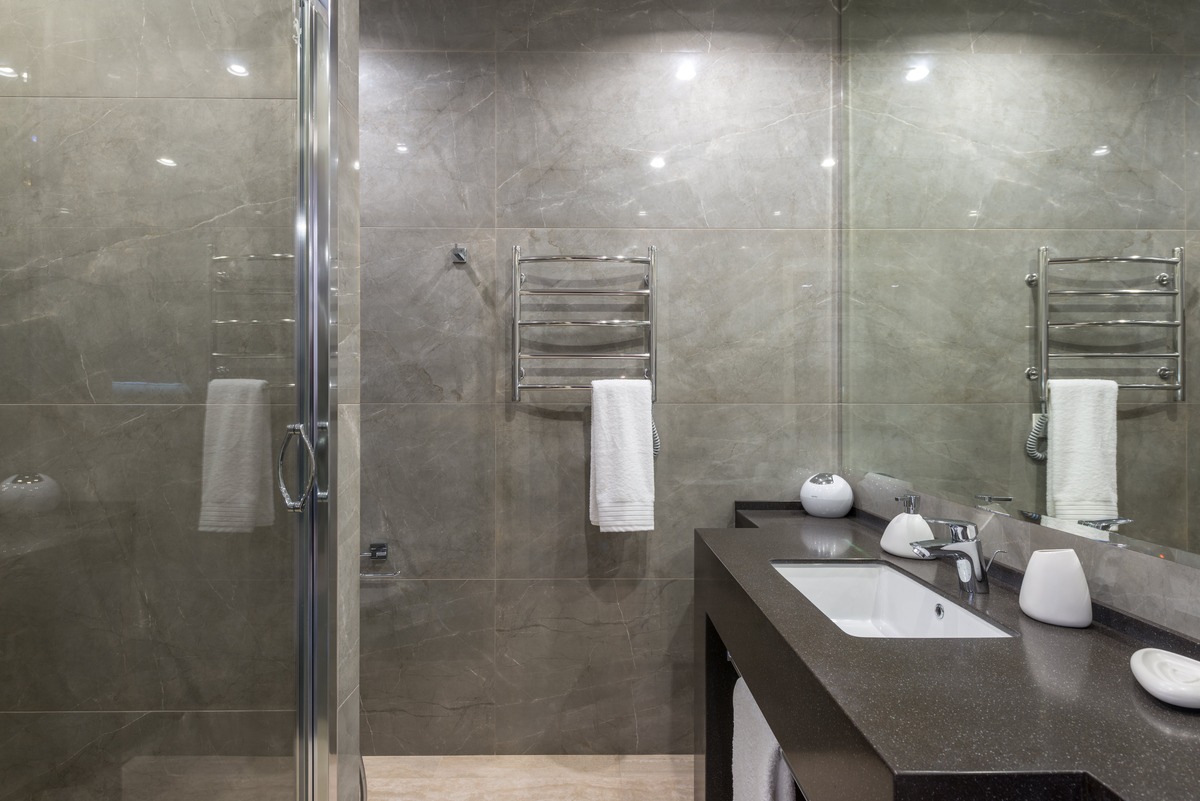
Final recommendations: Bathroom electrical zones
Bathroom electrical zones are essential to observe when installing lighting, heating, and power outlets in a bathroom. These regulations exist to protect users from electrical hazards while allowing for practical and safe installations.
Homeowners can create a safe and compliant bathroom environment by following IP minimum ratings, RCD requirements and installation guidelines. Whether updating shower lights or fitting a heated towel rail, ensuring that all electrical work meets UK safety standards is the best way to prevent risks.
Some common mistakes include:
- Installing non-IP rated lights in high-risk areas – This increases the chance of water damage and electrical failure.
- Placing sockets too close to water sources – Standard sockets should never be within 3m of a bath or shower.
- Using unapproved electric heaters – Only bathroom-safe heaters with the correct IP rating should be installed.
- Skipping RCD protection – RCDs prevent electrical shocks and are essential for all bathroom circuits.
UK regulations classify bathrooms as special locations and any electrical work must follow Part P of the Building Regulations. This means:
- Minor electrical work (e.g., replacing an existing light fitting) can be done by a competent person.
- Major work (e.g., installing new circuits or adding sockets) must be carried out by a qualified electrician and notified to Building Control.
To ensure that all installations comply with bathroom zones regulations and pass necessary safety checks, always hire a registered electrician.
Ability Bathe are bathroom designers Devon and surrounding areas trust, with more than 35 years of experience.
We specialise in outstanding walk-in showers Devon and our South-West customers love. For more information, contact Ability Bathe.



